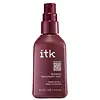What's inside
What's inside
 Key Ingredients
Key Ingredients

 Benefits
Benefits

 Concerns
Concerns

 Ingredients Side-by-side
Ingredients Side-by-side

Salicylic Acid 2%
MaskingWater
Skin ConditioningAlcohol Denat.
AntimicrobialButylene Glycol
HumectantPPG-26-Buteth-26
Skin ConditioningPEG-40 Hydrogenated Castor Oil
EmulsifyingPhenoxyethanol
PreservativeGlycerin
HumectantMentha Piperita Oil
MaskingSodium Hydroxide
BufferingGlycyrrhiza Glabra Root Extract
BleachingMenthol
MaskingT-Butyl Alcohol
PerfumingDenatonium Benzoate
MaskingLimonene
PerfumingLinalool
PerfumingWater
Skin ConditioningCaprylic/Capric Triglyceride
MaskingGlycerin
HumectantDihydroxyacetone
Skin ConditioningCetearyl Alcohol
EmollientButyrospermum Parkii Butter
Skin ConditioningErythrulose
TanningPalmitic Acid
EmollientCetyl Alcohol
EmollientSqualane
EmollientBrassica Oleracea Italica Extract
AstringentSh-Polypeptide-123
Skin ProtectingBioflavonoids
Skin ConditioningJuglans Nigra Shell Extract
AstringentSalvia Sclarea Oil
MaskingAloe Barbadensis Leaf Extract
EmollientTocopheryl Acetate
AntioxidantCaramel
Cosmetic ColorantSodium PCA
HumectantCalcium Gluconate
HumectantStearic Acid
CleansingGluconolactone
Skin ConditioningCetearyl Glucoside
EmulsifyingPropanediol
SolventSodium Benzoate
MaskingXanthan Gum
EmulsifyingPolyacrylate Crosspolymer-6
Emulsion StabilisingSodium Phytate
Glucose
HumectantT-Butyl Alcohol
Perfuming1,2-Hexanediol
Skin ConditioningCitric Acid
BufferingPotassium Sorbate
PreservativeAnise Alcohol
PerfumingParfum
MaskingLimonene
PerfumingLinalool
PerfumingWater, Caprylic/Capric Triglyceride, Glycerin, Dihydroxyacetone, Cetearyl Alcohol, Butyrospermum Parkii Butter, Erythrulose, Palmitic Acid, Cetyl Alcohol, Squalane, Brassica Oleracea Italica Extract, Sh-Polypeptide-123, Bioflavonoids, Juglans Nigra Shell Extract, Salvia Sclarea Oil, Aloe Barbadensis Leaf Extract, Tocopheryl Acetate, Caramel, Sodium PCA, Calcium Gluconate, Stearic Acid, Gluconolactone, Cetearyl Glucoside, Propanediol, Sodium Benzoate, Xanthan Gum, Polyacrylate Crosspolymer-6, Sodium Phytate, Glucose, T-Butyl Alcohol, 1,2-Hexanediol, Citric Acid, Potassium Sorbate, Anise Alcohol, Parfum, Limonene, Linalool
Ingredients Explained
These ingredients are found in both products.
Ingredients higher up in an ingredient list are typically present in a larger amount.
Glycerin is already naturally found in your skin. It helps moisturize and protect your skin.
A study from 2016 found glycerin to be more effective as a humectant than AHAs and hyaluronic acid.
As a humectant, it helps the skin stay hydrated by pulling moisture to your skin. The low molecular weight of glycerin allows it to pull moisture into the deeper layers of your skin.
Hydrated skin improves your skin barrier; Your skin barrier helps protect against irritants and bacteria.
Glycerin has also been found to have antimicrobial and antiviral properties. Due to these properties, glycerin is often used in wound and burn treatments.
In cosmetics, glycerin is usually derived from plants such as soybean or palm. However, it can also be sourced from animals, such as tallow or animal fat.
This ingredient is organic, colorless, odorless, and non-toxic.
Glycerin is the name for this ingredient in American English. British English uses Glycerol/Glycerine.
Learn more about GlycerinLimonene is a fragrance that adds scent and taste to a formulation.
It's found in the peel oil of citrus fruits and other plants such as lavender and eucalyptus. The scent of limonene is generally described as "sweet citrus".
Limonene acts as an antioxidant, meaning it helps neutralize free radicals.
When exposed to air, oxidized limonene may sensitize the skin. Because of this, limonene is often avoided by people with sensitive skin.
The term 'fragrance' is not regulated in many countries. In many cases, it is up to the brand to define this term. For instance, many brands choose to label themselves as "fragrance-free" because they are not using synthetic fragrances. However, their products may still contain ingredients such as essential oils that are considered a fragrance.
Learn more about LimoneneLinalool is a fragrance and helps add scent to products. It's derived from common plants such as cinnamon, mint, citrus, and lavender.
Like Limonene, this ingredient oxidizes when exposed to air. Oxidized linalool can cause allergies and skin sensitivity.
This ingredient has a scent that is floral, spicy tropical, and citrus-like.
Learn more about LinaloolT-Butyl Alcohol it is most commonly used as a solvent.
At room temperature, T-Butyl Alcohol melts and has a similar smell to camphor.
This ingredient is derived from isobutane. It is the simplest form of a tertiary alcohol. Due to its chemical structure, it is more resistant to oxidation.
Some sources online claim T-Butyl Alcohol is a fatty alcohol. However, it is not considered one due to its chemical structure.
Learn more about T-Butyl AlcoholWater. It's the most common cosmetic ingredient of all. You'll usually see it at the top of ingredient lists, meaning that it makes up the largest part of the product.
So why is it so popular? Water most often acts as a solvent - this means that it helps dissolve other ingredients into the formulation.
You'll also recognize water as that liquid we all need to stay alive. If you see this, drink a glass of water. Stay hydrated!
Learn more about Water